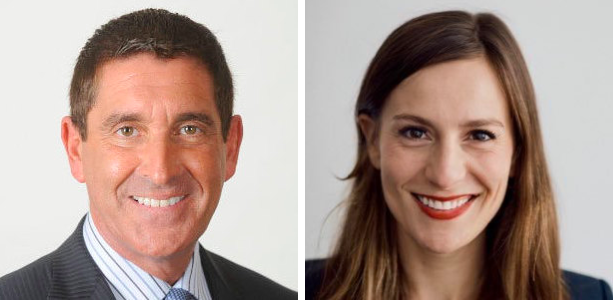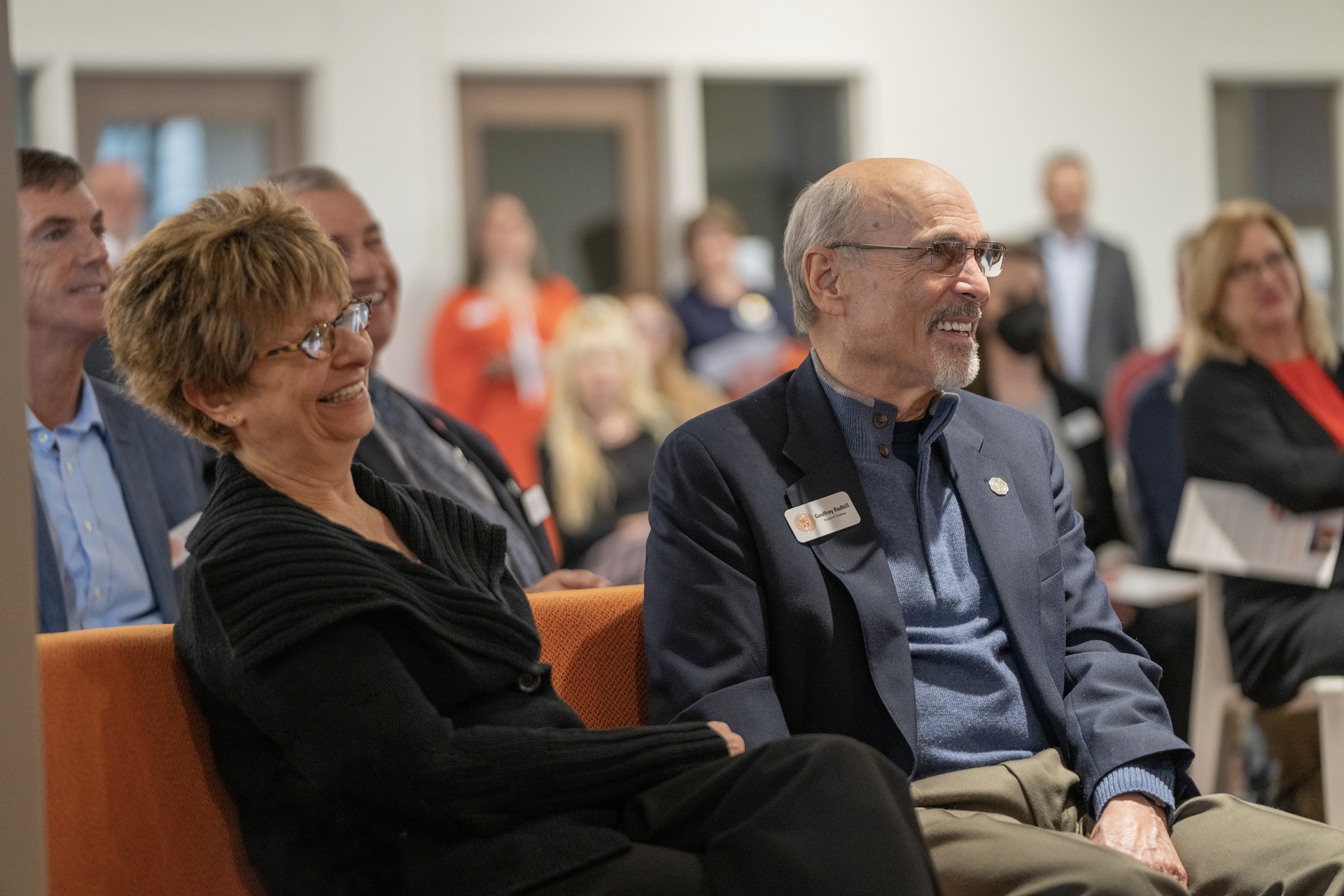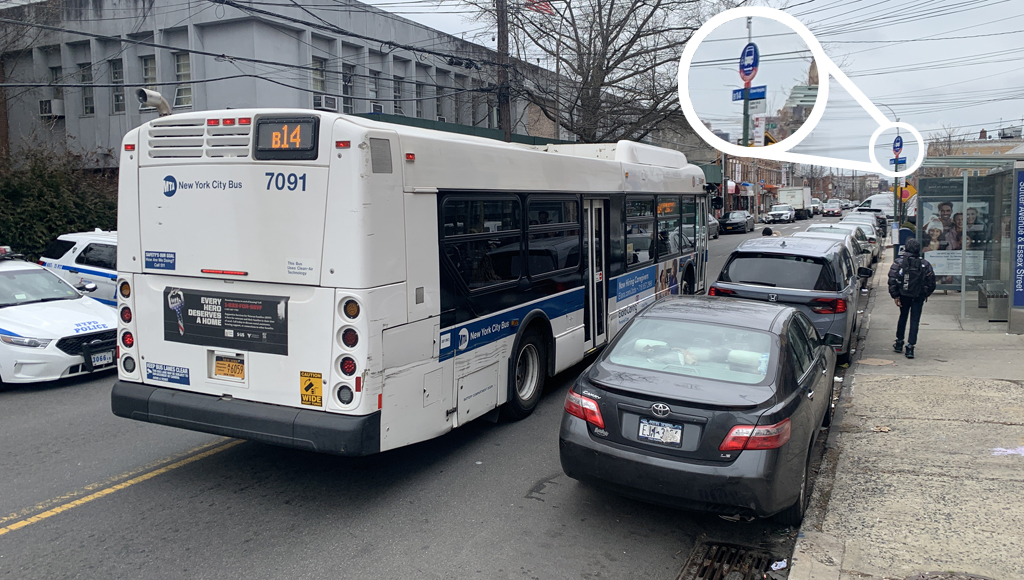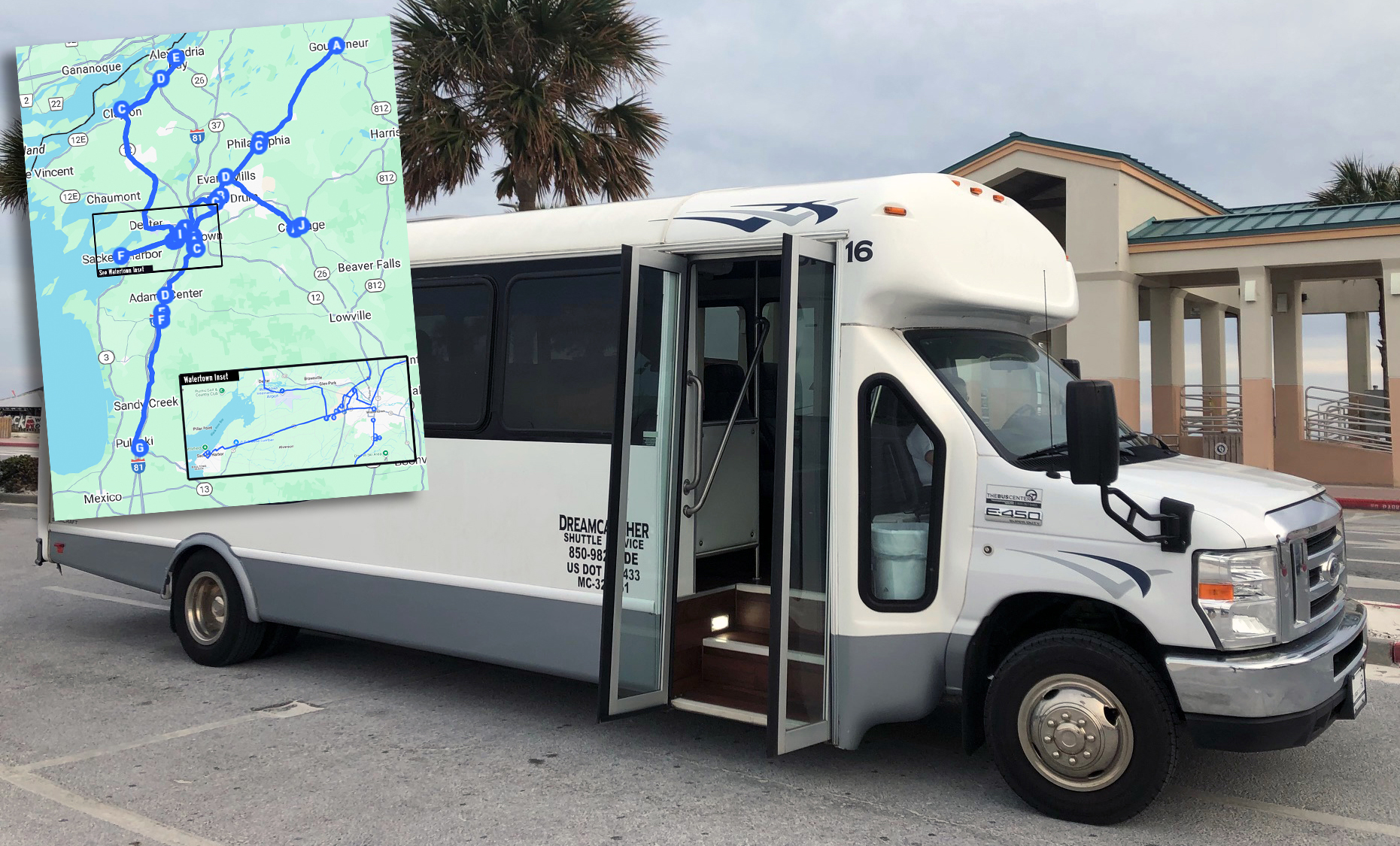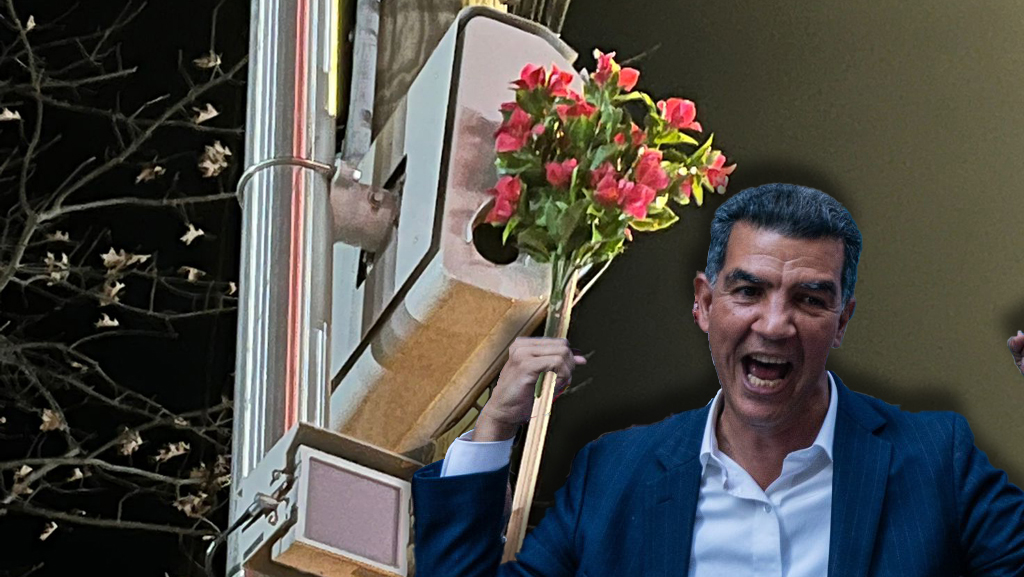Insurgent candidates are challenging incumbents in Albany this year like never before — and for good reason: The State Senate's failure to pass speed camera legislation this summer, the legislature's stall on congestion pricing, and the upper chamber's general political dysfunction are motivating people to focus on whether Albany itself is working.
So Streetsblog asked candidates in the upcoming Democratic primaries to answer basic questions about street safety and mobility. Today we look at Bronx's 34th Senate District: Alessandra Biaggi against incumbent Jeff Klein. Klein has been under fire from insurgents because he was the former Independent Democratic Conference, which caucused with Republicans, giving the GOP control of the Senate. In this race, StreetsPAC has endorsed Biaggi.
Here are the candidates' answers, unedited, with a map of the district at the bottom of this post:
Do you support congestion pricing in New York City? If so, in what form? If not, why not?
BIAGGI: The state of New York City’s public transportation infrastructure is abysmal due to decades of neglect by our public officials. I believe that implementing congestion pricing is the best way to revitalize the MTA and make long term investments in the future of our essential yet outdated transportation system. Congestion pricing will create a new, sustainable source of revenue that could fund much needed public transit improvements. It will also decrease the traffic that clogs the city daily. In 2017, the average car speed in the Manhattan Central Business District was only 6.8 mph, according to the Fix NYC Panel Report. Congestion is also an economic issue. According to the NY League of Conservation Voters, NYC stands to lose $100 billion over the next five years if congestion remains at current levels. That being said, we need to be mindful that we implement the policy in way that doesn’t burden middle class and lower-income New Yorkers and the parts of the city that are underserved by public transportation — including many parts of District 34. I was glad to see that Governor Cuomo’s Fix NYC Advisory Panel’s recommended investing in transportation in the outer boroughs as part of the first phase of congestion pricing. Given that the Fix NYC Advisory Panel has yet to specify which improvements will come under phase one of the plan, it will be key to focus on increasing capacity for communities who will be most impacted by the increased cost of driving into Manhattan under the new rules.
KLEIN: It is key New York City and the State continue to prioritize funding for public transportation as well as work to reduce congestion on our streets to reduce traffic and pollution. This is why the first step we took in the budget to impose a congestion pricing fee on for hire vehicles was so important since it acts as a continuous stream of funding for the cash-strapped MTA, funds transportation deserts and works to reduce congestion and pollution in New York City. As we move forward to contemplate the next phases of congestion pricing we must ensure that the outer boroughs are not over overburdened, ensure that transit riders have reliable public transportation to turn to, and ensure that any plan meets our goals of reducing pollution.
Subway ridership is down and New York's buses are slower than ever. What will you do in Albany/are doing in Albany to fix it?
BIAGGI: New York City’s subway system is broken, and we need bold and immediate action to fix it. The key is finding new sources of revenue to fund the complete restructuring and modernization that the MTA is in such dire need of. That’s why I support a progressive ?millionaires’ tax and congestion pricing to fund these long overdue improvements—and why I support reinstating the commuter tax, something my opponent irresponsibly voted to repeal and which has cost New York City billions of dollars in lost revenue. I will also prioritize the expansion and modernization of our bus system in New York City. This is especially important for the Bronx and District 34, many parts of which are serviced solely by buses. I support the MTA’s plan to reevaluate bus routes and update its fleet of buses and will work to ensure that it is fully funded. I believe the Bronx needs more bus lanes and want to expand select bus service in the Bronx.
KLEIN: Ridership is down because the current conditions of the subway make them unreliable and difficult to use. Therefore, in this year’s budget, I made funding our subway and mass transit systems a top priority. As a representative of the Bronx, which has multiple transit deserts, I also worked hard to make sure a portion of the fees collected from the newly implemented congestion pricing fee would be dedicated to the outer boroughs, which I will advocate be used to assist and build upon these transit deserts by offering more services. This year I also introduced the “Rider Relief Plan,” which purpose was to secure a funding stream for the Subway Action Plan and to make transit more affordable. I delivered in this year’s budget and played a pivotal role in securing the full amount of funding meant to address the immediate needs of Subway from both the City and State. I also supported expanding the current bus camera program in the budget to help fund the subway and to enforce misusage of our bus lanes.
MTA capital projects routinely cost five times as much as transit projects in other cities. How will you exert pressure on the MTA to control costs?
BIAGGI: MTA capital project costs are unacceptably high in New York City hindering our ability to make long term investments in transportation infrastructure. While we need to ensure that MTA contacts are efficient and not overstaffed, we should never compromise working with unions or paying workers the prevailing wage. Instead, we need to look to the structure and process of MTA capital projects. That's why I support expanding the MTAs use of design-build instead of the traditional design-bid-build process. This method forces the project owner to have two separate contracts with a designer and contractor when undertaking new MTA construction. Under the design-build model, there is a single bidding process to select a contractor who both designs and builds the project. Designers and contractors work with each other to develop cohesive plans and recommendations for the owner in a much more efficient manner. The single source contracting leads to greater collaboration and productivity. I would like to see the MTA expand its use of this model (and also authorize more state agencies to use design build).
KLEIN: Controlling costs is linked to efficiency. It is important the MTA is given the tools and resources needed to work smart and quickly in order to deliver projects in a timely manner. Many of the high costs associated with the MTA are linked to the fact it has been ignored for too long and now we are being forced to play catch-up. It is also important we continue to support the competitive bid model to help ensure the costs associated with the MTA are kept low.
How would you make streets in your district safer for walking and biking? Do you support the city's construction of protected bike lanes? If so, why? If not, why not?
BIAGGI: I support taking action on several fronts to make our streets safer for cyclists and pedestrians. To start, we need to ensure that there are serious penalties for driving that endangers cyclists and pedestrians. In 2017, there were more than 5,000 instances when a hit-and-run incident injured someone. In the same year, at least one person was killed every week by a hit-and-run driver. We must also increase penalties on drivers for fleeing an accident. I support raising the felony class for fleeing the scene of a fatality to C from D. This would eliminate the loophole that allows drunk drivers to flee the scene of a fatality in the hopes of facing that charge rather than the class C crime of killing a person while driving drunk. I also support efforts like NYC’s new alert system which will let New Yorkers know when a serious crash happens in the hope of increasing arrest rates for hit-and-run drivers.
Beyond stiffer penalties, we need to increase safety in school zones. I will support any bill that deploys speed cameras to school zones, ideally to all of schools in New York City. The evidence is clear: speed safety cameras increase safety. I also support strong consequences for drivers caught speeding in school zones. Unfortunately, efforts to expand the number of speed safety cameras have passed the Assembly and died in the State Senate, as did a reauthorization of New York City’s existing speed safety camera program. This is another example of the price we pay for a Republican-controlled State Senate, one fully supported for the past seven years by my opponent.
I also support the city’s construction of protected bike lanes because they promote a healthier and more environmentally friendly form of commuting. Bicycling is a convenient alternative to automobiles and public transit that has immense public and environmental health benefits. Protected bike lanes will dictate areas of roads where cyclists can go, making cycling less hazardous to pedestrians, cars and bicyclists themselves.
KLEIN: One of the best and most effective ways to make our streets safer is by extending and expanding our speed camera program. This program has proven to save lives by stopping people from speeding through school zones and injuring pedestrians. I also support protected bike lanes, with community input, to help keep our cyclist safe.
What is the single biggest thing the state should do to get reckless drivers off New York City streets?
BIAGGI: Reckless driving in New York City is a serious issue. However, I don’t think there is a single solution to the problem. Instead, New York City should approach the issue from a lot of different angles. That’s why I support programs to increase protections for cyclists and pedestrians, and increase penalties for reckless driving behavior. I also support ?New York City’s Right-of-Way Law, which is vital for protecting pedestrians and cyclists in New York City. According to Transportation Alternatives, more than 15,000 pedestrians and cyclists are killed or injured each year by drivers in New York City, often as the result of a driver failing to yield. In 2015, failure to yield alone caused almost 6,000 incidents of death or injury. The city’s Right of Way Law ensures that drivers face consequences for injuring or killing a person who had the right of way in a crosswalk due to their failure to yield. We must protect the law against efforts to weaken it, including a proposal to exempt bus drivers from these rules. ?It is also essential that we ?add bicycle and pedestrian safety to drivers education programs. Ultimately, I think we can best tackle the issue of reckless drivers through an all of the above approach.
KLEIN: The State can extend and expand the current Speed Camera Program. This program is proven to work and has reduced pedestrian fatalities. The City found that total crashes went down by 15%, crashes resulting in injuries reduced by 17% and fatalities were down 55% in school zones where cameras were used. With these proven results, it only makes sense to expand this program. I was proud to be the original sponsor of the speed camera program and will continue to advocate for it in the state Senate to get reckless drivers off our streets.
Is there a safety, design or enforcement strategy that is not being deployed that you think is vital to making our roadways, sidewalks and public spaces work better for everyone? (Hint: This is a "visionary" question, so don't think small.)
BIAGGI: There are a lot of small scale policy changes that we can implement to make our existing infrastructure safer. But to really make these spaces work better for everyone long term, we need to be intentional about who we prioritize in designing public space. Indeed, we must approach this question as a matter of social justice. The way our infrastructure is designed has important environmental implications for our communities, and economic implications. Our public spaces have the potential to build community and boost economic growth. But they also have contributed to high rates of pollution largely in low-income communities and communities of color. In District 34, for example, 20,000 diesel trucks come through Hunts Point each day going to and from the food distribution plant, leading to high levels of air pollution and asthma. We need to think about ways to change how we move materials to and from the Bronx, particularly the Hunts Point distribution center. Even small changes like increasing the number of trees on our streets and pedestrian zones are important. Considerations of environmental impact are already part of our decision making, but to truly make our public spaces better we need to keep the goal of economic and racial justice at the forefront. Well designed public spaces, walkways, and roads should be a tool in achieving equality in our society.
KLEIN: Road safety is a multi-pronged issue. It is important we continue to design new roadways with better lines of vision, enforce laws that combat distracted and drunk driving, and ensure there are systems in place to protect pedestrians. I am proud that I played a major role in the Vision Zero initiative and brought the original speed camera program to New York. We need to put a speed camera in every school zone in the city of New York in order to make our streets safer. By looking at the transit issues on a global level and making sure all these variables work together, we can then make our roadways, sidewalks, and public spaces safer for everyone.
How often do you bike to the office (be honest)?
BIAGGI: Right now, my office is in the basement of my parents’ house, which is also where I am currently living — so I walk two flights of stairs to work. However, I? ?do enjoy biking as a healthy pasttime.
KLEIN: I do not.
